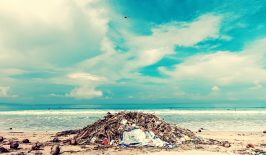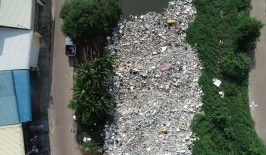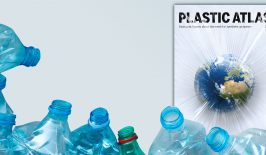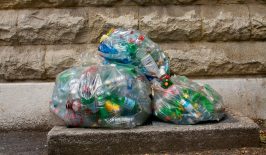Anywhere between 8 and 12 million tons of plastic are dumped into our oceans every year. Plastic waste not only endangers the lives of many different types of marine animals, but in the long term also those of us humans, when it breaks down into microplastics that enter our drinking water, food, and even the air we breathe. The WWF has visualised the issue of plastic waste in an interactive map, whilst also providing an overview of the progress made on international action to tackle the challenge of plastic pollution.
On the “Global Plastic Navigator” website, users can open different levels of a world map. The first shows where the concentration of floating plastic at the sea surface (by weight) is particularly high. The data is based on measurements from a total of 24 different scientific expeditions. On two further levels, the map shows where the plastic waste that collects in the sea comes from. On one level, the map shows the amount of poorly disposed of plastic waste per square kilometre that can potentially end up in the environment. WWF uses population data and the GDP of the respective countries to work this out. The second level shows the amount of plastic that flows from rivers into the sea each year, also measured by weight. The focus here is on the 122 most polluted rivers worldwide. Wind and rain cause large amounts of plastic waste to accumulate in rivers, which is then ultimately released into the ocean.
In the sea, the plastic waste is then moved on by currents and collects around the centres of large gyres. The map shows where these currents run. In total, there are five large subtropical gyres: the North Atlantic Gyre, the South Atlantic Gyre, the Indian Ocean Gyre, and the North and South Pacific Gyres. The highest plastic concentration is found in the North Pacific Gyre. It is also known as the Great Pacific Garbage Patch. These gyres, which are mostly formed by winds, are rotating systems of currents, and the direction that they rotate in is influenced by the rotation of the earth. Since weaker winds and currents usually prevail in the centre of the gyres, the drifting plastic slows down and accumulates there. That creates cast areas in the ocean where the water is completely covered with plastic waste.
The data for the WWF’s interactive world map comes from scientific publications on plastic waste and the numbers are continuously being updated. The sources of the data used are referenced in the descriptions of the different layers and there are also links to the respective scientific publications.
Map reveals which countries support an international effort to tackle plastic pollution
“The map turns the latest scientific data into a visual tool. This helps give people a clear idea of the size of the huge flood of plastic waste – both from the global perspective of the world’s oceans to smaller, local sources of plastic pollution that comes from individual rivers,” explains Bernhard Bauske, the project coordinator for plastic waste at WWF Germany. “The result is frightening: there is plastic even in the furthest reaches of our oceans.” The interactive map is designed to help decision makers develop effective strategies to stop plastic waste from entering the oceans.
The WWF is also campaigning for an international plastics agreement to end the plastic pollution in our oceans. In order to see which countries have already publicly spoken out in favor of such an agreement, or have at least shown willingness to consider a possible agreement, users can click on individual markers on the map. “Thanks to the map, we can see that support for an international agreement against the discharge of plastic waste into the oceans is already quite strong,” said Bauske. Among the supporting countries are several member states of the European Union (EU) and the African Union. “With the interactive map, every citizen can now see whether their government is committed to this framework against marine plastic. This will also increase the pressure on states that are still hesitant about the agreement”.
Various studies suggest that the plastic pollution of our planet could be reduced by around 80 percent by 2040 – but only if we adopt far-reaching system change, and up our efforts to reuse and recycle plastic waste. And while we are currently still a long way from a joint action plan, many countries have now banned selected plastic products, with a particular focus on banning disposable carrier bags and microplastics in cosmetic products. The European Union has also recently voted to bring in a ban on one-use plastics. At the same time, many scientific communities and non-governmental organisations are working on solutions. However, there is still no global strategy that includes practical and measurable interventions to reduce pollution from plastics. This needs to be addressed at the level of international corporations: Only a few dozen companies produce the majority of plastic products and only a handful of multinational corporations dominate the market for plastic pellets, the raw form of plastics, as the Plastic Atlas from the Heinrich Böll Foundation shows. Really far-reaching changes in the global plastics crisis can only be achieved if binding regulations are enforced that oblige manufacturers to reduce production or develop more recyclable, biodegradeable and plastic-free alternatives.
This is a translation of an original article that first appeared on RESET’s German-language site.








